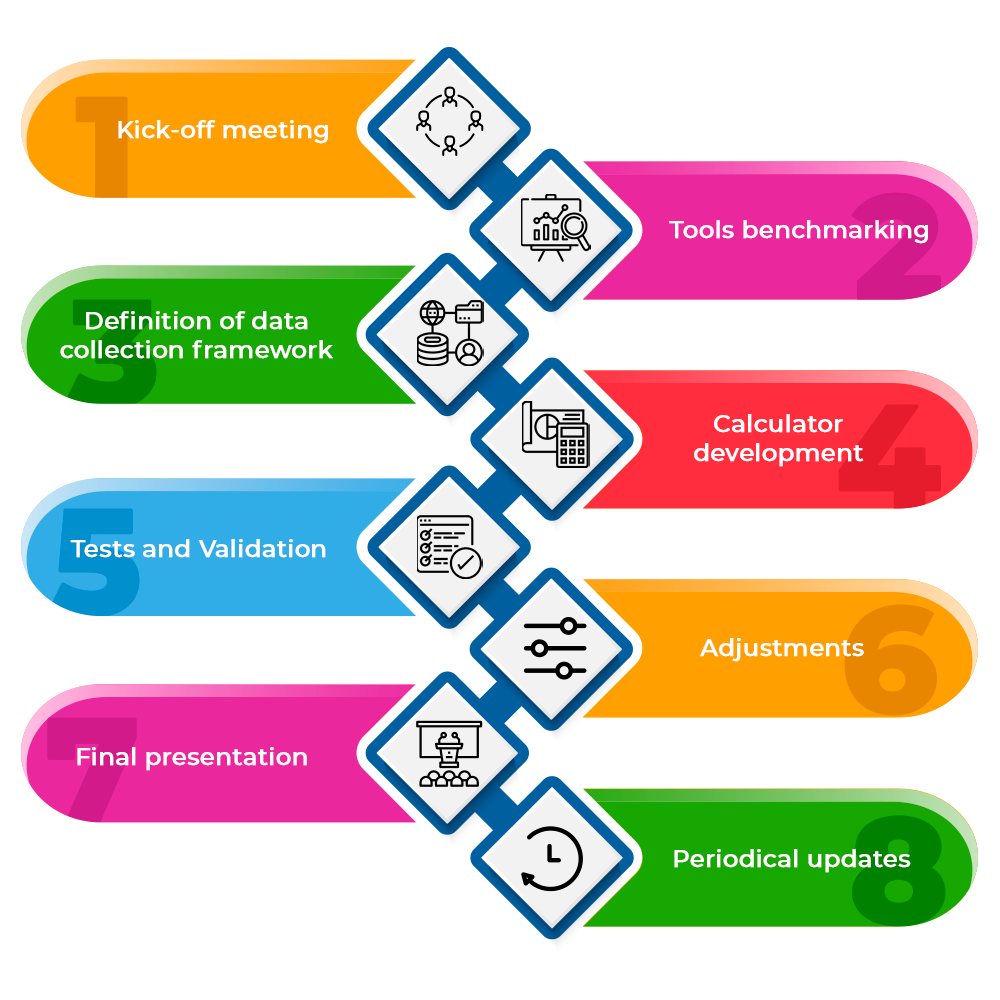Carbon Footprint Calculation Project
Background Information
According to UNESCO[1], the ‘carbon footprint’ (CF) concept arose out of the debate on climate change, as a tool to measure Greenhouse Gases (GHG) emissions, that contribute to global warming. Carbon Dioxide (CO2) emissions account for 82 per cent of global warming, with the rest coming mainly from the much more potent greenhouse gases methane and nitrous oxide[2].
In this case, the CF measures the emission of gases that contribute to heating the planet in CO2-equivalents per unit of time or product.
Thereby, getting to know our carbon emissions equivalent, directly or indirectly, is very important to reduce them in order to slow global warming, improve the quality of life on the planet, reduce the ecological footprint and avoid overshoot, known as overload from the earth.
Another important concept in this scenario refers to Life-Cycle Assessment (LCA), described by UNEP[3] as “the process of evaluating the effects that a product has on the environment over the entire period of its life cycle”. The technique differs from other environmental tools as it can be used to study the environmental impact of either a product or of the function a product is designed to perform, providing objective data which are not dependent on any ideology.
Project Rationale
Carbon Footprint and Life Cycle Assessment for feed production have been trendy topics all over the world, especially in Europe. Several calculation methods and approaches or carbon footprint accounting have been proposed and are being used. At the moment, customers are forced to calculate using the default data, which, in most cases, creates a disadvantage for them. In Europe, for instance, data on CF and LCA are becoming more relevant for feed and food production. In certain countries it is already obligatory to deliver this data.
According to LCA rules and standards (EU Product Category Rules for Life Cycle Analysis[4]), the contribution of land use change can be excluded from an LCA of a crop if the farm can prove “no conversion” over a 20-year period. Brazilian soybeans have very high CO2 footprints due to the carbon losses that occurred through land conversion and land transformation – these losses are accounted for in the life cycle of soybean production as Land Use and Land Use Change (LULUC). The current system is unfair towards organizations that invest in sustainably produced and land conversion free raw materials, because the twenty years period cannot be proven in most cases (due to low resolution, costs or non-existing data). The ProTerra standard is a deforestation free standard with a cut-off date of 2008. That means that, in many cases, it is not possible to guarantee LUC free areas for 20 years back. However, based on primary data that is required to be shown during the ProTerra audit process, ProTerra Certifications guarantee that the crops produced under the standard have better and more reliable figures related to LUC free areas than non-certified crops (mainly soy).
In that way, ProTerra has envisioned the need to collect and include primary data on emission factors for GHG associated to agricultural production in a structured way, as part of our certification schemes for calculating Carbon Footprint of its customers in a robust way. In a partnership with FEE® (Fundação ECO Espaço[5]), a non-profit organization in Brazil, established by BASF, with the support of GIZ (German Agency for Technical Cooperation for Sustainable Development), to promote sustainable development in the business environment and society, ProTerra is working on the development of a tool to calculate GHG emissions, comprising methods to estimate the Land Use Change – LUC and the resulting GHG rates. Our main goal with the project is to differentiate from non-certified products, by offering buyers primary data for GHG calculation.
Short term plans
The project workplan and timeline foresees the following tasks:

Expected Outcome
This project shall provide a data collection template and a tool composed of a calculator and a database developed in an easily accessible tool. We expect that, by the end of 2020, we will have more primary data on LUC calculation of values of GHG emission for soybean cultivation, and GHG emissions associated to processing, soymeal production and transport to port for ProTerra certified soy.
